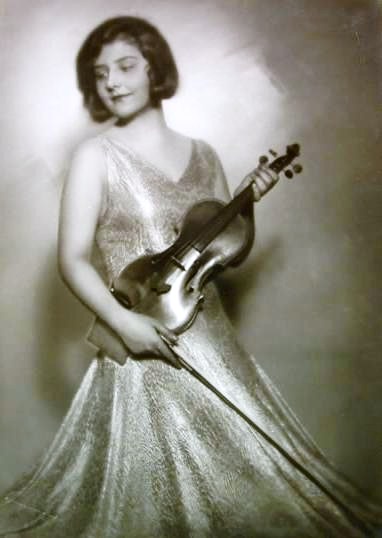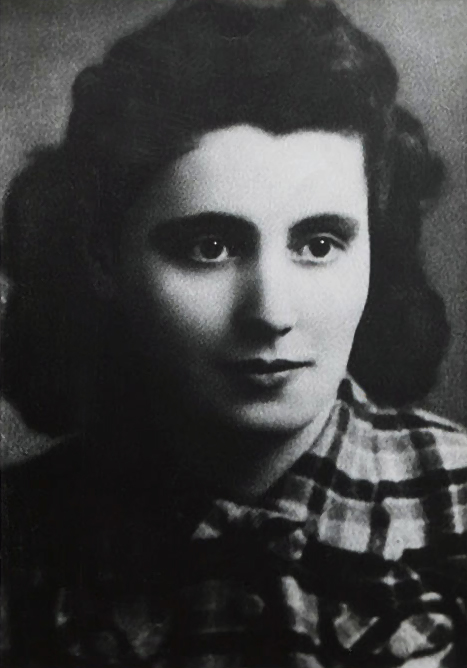Auschwitz camp has accumulated an array of personalities from around the world. Undoubtedly, plenty of geniuses and undiscovered talents were brutally killed deprived of dignity. However, some has managed to mark their presence and deeds for the future generations. Here are some incredible stories of famous women in Auschwitz camp. Those good as well as bad ones.
Alma Rose
Remarkable personality, respectable teacher and an excellent musician – that’s how world remembers Alma Rosé. She was conducting Women’s Orchestra of Auschwitz – an official music group performing daily in Auschwitz camp. She is famous for implementing new rules and groundbreaking changes in the orchestra. For some, those changes were truly lifesaving. When Rose firstly arrived in Auschwitz camp, she received a tattoo number 50381. In block no. 10, where brutal Auschwitz experiments were conducted, she asked for her last wish – to play her violin. At the same time, news about her past and abilities has spread around Auschwitz camp. That was her entry to stay alive.
Respected Jew
Soon, she became the greatest conductor in Auschwitz camp. Thereby, she also became a Jewish respected by by Nazi officers. Especially Joseph Mengele (“Angel of Death”) acclaimed Alma’s activities and enjoyed listening to her concerts. Due to Rose’s request, a piano and an iron stove appeared in the Music Block, the place of the rehearsals. Due to her effort, women’s orchestra reached new heights. In consequence, SS members started to enjoy performances which placated their attitude towards musicians. In fact, Rose managed to provide several new privileges for members of her orchestra. It included heated room, single beds, lighter work or even better food.
Relentless savior
Nevertheless, she was very strict and did not interacted with other women from the band. She made them playing 12 to 17 hours a day! It includes rehearsals, SS concerts and everyday performances. Former members of the orchestra note that they were more scared of Rosé than of the gas chambers! However, this let them not to focus on the terrifying Auschwitz camp reality. That’s why many of them are truly grateful to Alma Rosé.
Unfortunately, Rose never left Auschwitz camp. She died because of a sudden sickness – food poisoning. Her funeral was exceptional – coffin with white flowers with orchestra members and Nazi officers around.
Maria Mandl
As a young girl she had a choice: work in a concentration camp or nurse service. She chose the first option – a well-paid job with much better perspectives… After few years in the Auschwitz camp she became SS-Lagerführerin in the women’s camp, where they called her “The Beast”.
As SS-Lagerführerin she had an absolute power over women prisoners. Taking advantage of this privilege, she introduced some horrifying resolutions. She was extremely brutal against children. During her leadership, infants were being sank and burned alive. According to prisoners memories, she ordered to throw a newborn child outdoor so rats could eat it.
Bestial practices
Women in Auschwitz camp were literally terrorized by relentless Mandl. Her mood swings were synonymous with cruel death of many. She was especially abusing pregnant women by kicking their stomachs and sending them for inhuman experiments. By her order, many women were killed with intracranial phenol injection. Not to mention numerous criminal batteries, many of them with fatal effect.
What’s more, she gave an order of sending around 500 thousands of women and children into gas chambers.
Sensitive monster?
Paradoxically, cruel Maria Mandl occurred to be…. a music lover. She created women’s orchestra in Auschwitz and was proud of their achievements! Alma Rose – orchestra’s conductor was her favorite. After the war, Maria Mendl was arrested and soon sentenced to death. Times of Auschwitz “Beast” were finally over. However, her brutal deeds would always stay in numerous minds. No wonder why she appears in many memories of former Auschwitz prisoners.
Annie Frank
A young Jewish girl who received her first diary and wrote one of the most important works on the Holocaust. Anne with all her family managed to live in hiding in Amsterdam as much as over 2 years. During that time, she started to write her thoughts in diary which she had received on her birthday. Those notes had become a great piece of work after the war. Despite of hard conditions of living underground, awareness of the war and omnipresent death, her notes aren’t pessimistic. Living in a closed world of the tiny apartment, she focuses on small things that make her happy or sad. For example, she describes slight arguments between her family or first fascination with boys. However, those notes are very mature considering the young age of Anne Frank. She never loses hope, although her friends are being killed and the world is lost in total injustice.
A great example of her unbelievable optimism are those sentences:
“In spite of everything I still believe that people are really good at heart. I simply can’t build up my hopes on a foundation consisting of confusion, misery, and death.”
Unfortunately, Germans found out about their shelter in August 19454. Thanks to a Dutch informer. Nazi officers immediately arrested the Jewish family and sent them directly to Auschwitz. Otto Frank (Anne’s father, the only who survived the war) desperately tried to stay together with his family upon arrival to the camp. Nevertheless, officers separated men and women and that was the last time he saw Anne. After few months in Auschwitz, she had been transferred into Bergen-Belsen where she died of typhus.
Thoughts of an angel trapped in a hell
However, this sad ending even highlights the pathos of Anne’s optimistic diary. Her father published all her notes in 1947 for the first time. Soon, it has been translated into 30 languages! It shows how valuable and unique were Anne’s thoughts. A movie entitled “The Diary of Anne Frank” from 1959 received numerous prizes including 3 Oscars.
Nowadays, there is famous Anne Frank Museum in Amsterdam attracting thousands of visitors from around the world. It has many exhibitions related to Anne’s life as well as to different kinds of discrimination and harassment.
Mala Zimetbaum
Mala is known in the world as heroine of the most beautiful love story from Auschwitz camp . One can wonder how is it even possible to experience a love story in such place. Well, Mala did and her story is definitely worth to learn about.
Mala was born in 1918 in Poland and in 1928 moved to Belgium. She could speak German, Dutch, French, Italian and Polish fluently. However, she was Jewish and that was all that mattered during the war. In 1942 she had been arrested and sent directly to Auschwitz concentration camp. Nonetheless, her ability to speak so many languages helped her to get better position in the camp. She became an interpreter and was working in the office. Primarily, she was assigning duties to healthy female prisoners. Regardless of her higher position she never felt better than other women in a camp. Former prisoners mention that she was always kind and helpful. In fact, Zimetbaum always tried to warn inmates about selections. What’s more she was active in the resistance movement in the camp.
Love in a helpless place
In 1944 she met Edward Galinski and the love story began. Their relationship was short but extremely strong. Galinski had been planning to escape from Auschwitz before they met. Soon, it became a plan for both of them. Edward stole a SS uniform and together with Mala left the camp thanks to a fake pass. What’s more, Mala had prisoners deportation lists with her. She wanted to inform the world about the Auschwitz camp. Unfortunately, both lovers were captured at the Slovakian frontier and immediately sentenced to death.
Courage to the last
However, that was not the end of Mala’s resistance to injustice. When officers were leading her to gallows she slashed her wrists with a razor blade. Thereby, she violated Nazi officer with her Jewish blood. Then, she declared her last words, that became a proof of her courage and honor:
`I fall as heroine and you will die as a dog.’
Today we can find a remembrance of the tragic couple in Auschwitz Museum. These are two tresses in a sheet of paper. If you still haven’t.



















